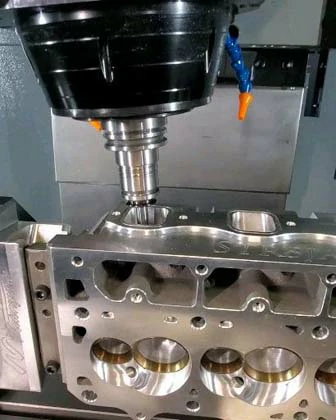The difference and application of plane milling and surface milling in CNC machining
The Difference and Application of Plane Milling and Surface Milling in CNC Machining
Introduction
In the field of CNC machining, plane milling and surface milling are two commonly used techniques. Although they may appear similar at first glance, there are distinct differences between the two in terms of their processes and applications. Understanding these differences is crucial for optimizing machining operations and achieving desired results. This article aims to explain the dissimilarities and explore the applications of plane milling and surface milling in CNC machining.
Plane Milling
Plane milling, also known as face milling, is a process that involves removing material from a flat surface using a rotating cutting tool. It is commonly used for creating smooth and accurate horizontal or vertical surfaces on workpieces. The cutting tool, known as a face mill, has multiple cutting edges and rotates on an arbor. The workpiece is clamped onto a milling machine table, and the face mill moves across the material to remove precise amounts of material with each pass.
Plane milling is highly versatile and can be used to produce various components, such as flat bases, slots, and grooves. It is particularly effective when dealing with large workpieces or when high material removal rates are required. The process is often used in industries where precision and efficiency are essential, such as aerospace, automotive, and mold making.
Surface Milling
Surface milling, on the other hand, focuses on creating complex three-dimensional shapes on the surface of a workpiece. This technique involves removing material from the upper layer of the workpiece, leaving behind intricate patterns or textures. Unlike plane milling, surface milling requires specialized tools, such as ball end mills or engraving cutters, which can accurately follow the contours of the desired shape.
Surface milling finds its applications in various industries, including jewelry making, signage manufacturing, and artistic sculpture. It allows for the creation of unique patterns, textures, and designs that enhance the aesthetic appeal of the finished product. Additionally, surface milling is often used in industries where mold making or prototyping is required, as it enables the production of intricate molds with fine details.
Conclusion
In summary, plane milling and surface milling are two distinct techniques used in CNC machining. While plane milling focuses on creating flat surfaces, surface milling is dedicated to producing complex three-dimensional shapes and patterns. Both techniques have their unique applications in different industries, depending on the desired outcome and requirements of the workpiece. Understanding the differences and choosing the appropriate technique can greatly enhance the efficiency and precision of CNC machining operations.
In conclusion, having a clear understanding of plane milling and surface milling is crucial for achieving optimal results in CNC machining. By leveraging the strengths of each technique and selecting the appropriate one for a given task, manufacturers can ensure the production of high-quality components that meet the specifications and requirements of various industries.
.webp)

